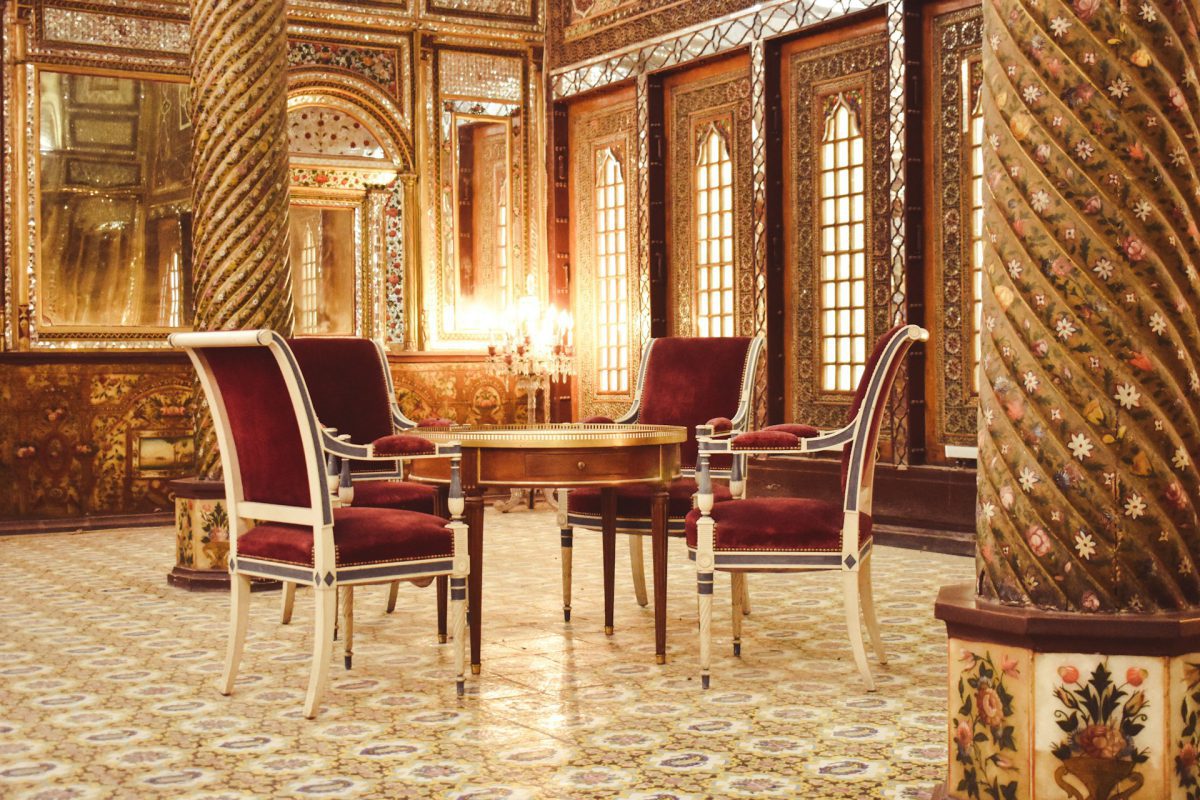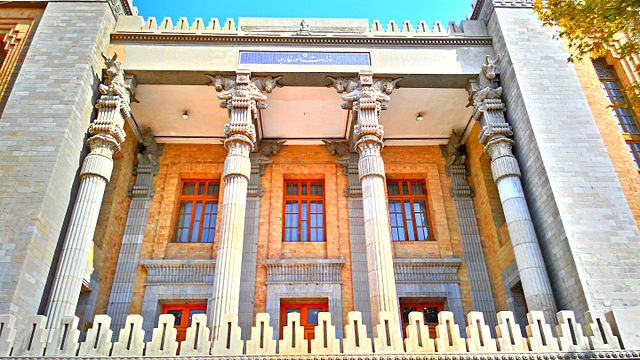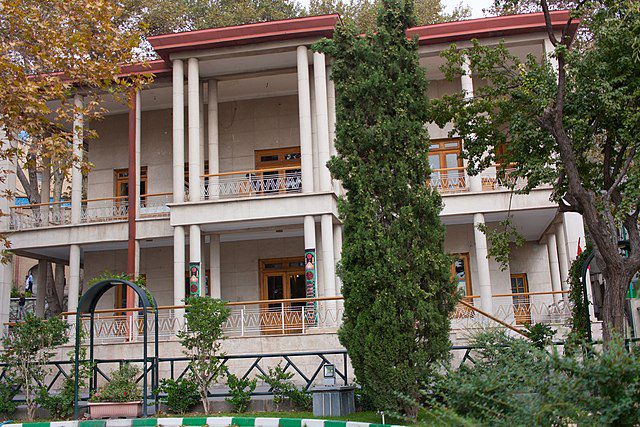Table of Contents
Palaces in Tehran, the capital of ancient Persia are part of the tourist and historical attractions. The legacy left by the Qajar kings. Some of the Qajar palaces of Tehran were added to their spaces in later periods and renovations were made and used in them. Some of the palaces in Tehran were also destroyed, and new Iranian palaces were rebuilt in the Pahlavi period to make the glory of this rule more visible to the world.
The palaces in Iran that have survived from the Qajar period are simpler than the constructions of the Pahlavi period. Because Iran of the Pahlavi period sought to restore the glory of the ancient governments and had more political relations with foreign countries than during the Qajar period, for this purpose the palaces used in their era showed the most magnificent in the world. In this article, we try to introduce the most important palaces in Tehran.
Golestan Palace
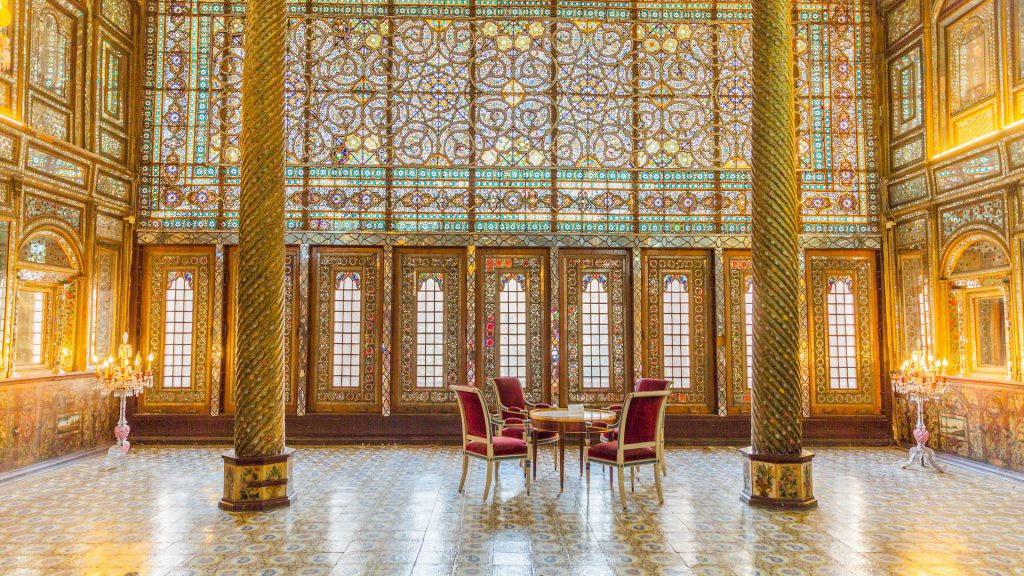
Golestan Palace is a historical complex that is a relic of the time of Shah Abbas Safavid and is one of the royal palaces of Tehran. Its history dates back to 988 AH. This Iran palace changed during the Zandieh period, but the most important period of this royal palace can be attributed to Agha Mohammad Khan Qajar.
This magnificent palace, which combines Iranian and European architecture, has been inscribed on the UNESCO World Heritage Sites of Iran List. Golestan Palace contains 12 halls and sections, and each one is a great reminder of why this palace had been registered in the UNESCO World Heritage list.
One of the most important reasons to visit this Iran royal palace, in addition to observing an important part of the artistic history of Iran, is access to a living document of effective events that have occurred in the past of Iran.
Sa’d Abad Historical Complex
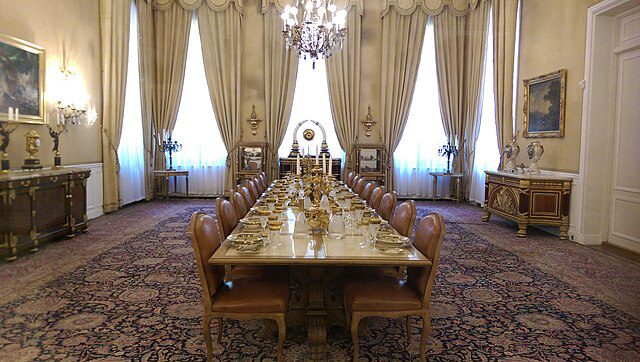
One million and one hundred thousand square meters is the area of this Iran palace. Sa’d Abad Museum Palace is located in a pleasant climate area in the north of Tehran and the foothills of the popular Tochal and Darband valleys. This museum palace was built during the Qajar rule when Tehran was declared the capital of Iran. Since then, it has become the summer palace of the Qajar and Pahlavi kings, and due to its cool summer weather, it has been the best place for an aristocratic summer residence.
One of the main customs and rules of Iranian palaces is to have multiple doors for different purposes. In the study of palaces in the world, we conclude that the existence of different doors had its philosophy of existence. Large doors for entry or exit of parades and government guards and other doors for administrative and service affairs and so on.
That is why this palace has eight entrance doors. This palace, like Golestan Palace, has several sections. The most popular of these sections include Ahmad Shahi Palace, Citizen’s Palace/ the Green Museum Palace, Nation Museum Palace / White House, Gholamreza Palace, and Shams Palace.
Niavaran Complex
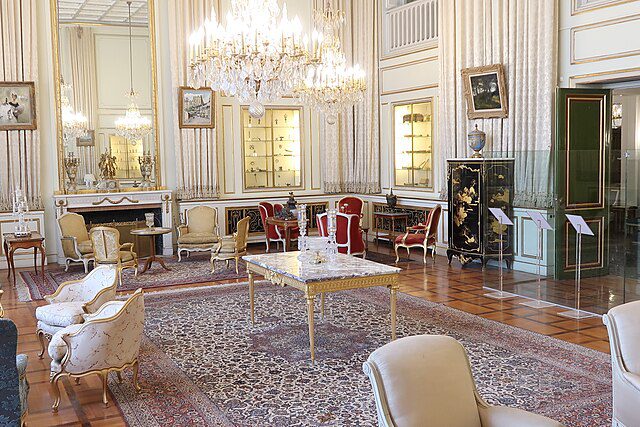
Niavaran Palace Complex dates back to the Pahlavi era and before the Pahlavi dynasty lived in this palace and garden of Niavaran, Qajar kings used this garden as a summer residence. Niavaran Palace has a simple yet modern architecture.
Also, beautiful beds, mirrors, and embossed tiles can be seen. In this palace, exquisite paintings by famous local and foreign painters are remembered. Valuable handmade carpets precious dishes and decorative items are other spectacular objects in Niavaran Palace.
Inside Niavaran Palace, all the old furniture is still there and the furniture, curtains, decorative items, and valuable works of Iranian and foreign artists that were in this building during the time of Mohammad Reza Shah Pahlavi remain there.
In the design and construction of Niavaran Palace, traditional Iranian and modern European architecture are combined. This palace is the only royal building with an open roof. A unique design has been done on each floor of Niavaran Palace.
The architecture of Niavaran’s private palace is very modern and advanced at the same time. The palace has an area of about 9,000 square meters and a movable roof on two and a half floors. The roof of Niavaran Palace is made of aluminum and valuable works by artists from all over the world are kept in it. The roof of Niavaran Palace opens on some days for visitors to see.
Sahebqaraniyeh Palace
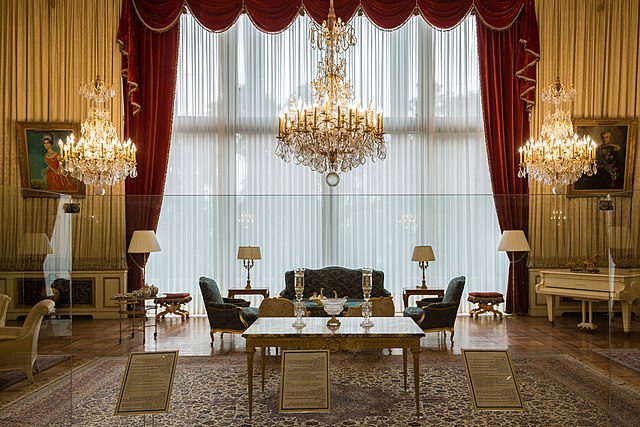
Sabqaranieh is the name of a historical palace in the north of Tehran, which is located in the big garden of Niavaran and is in the Niavaran complex. This palace has great historical significance and is, therefore, one of the most important royal palaces of Tehran.
Regarding the architecture of this palace, it should be said that it is a white building with an emerald green roof. In this palace, elements such as mirrorwork, and colored glass have been used, and in general, Iranian architecture can be well seen everywhere.
Of course, no one knows exactly who the architect of this beautiful building was, because there is no trace of him left. The palace is made up of several different parts, but you can see very large paintings everywhere. Paintings on some of which have pictures of Qajar kings, pictures of Nasser al-Din Shah, and pictures of different landscapes.
One of the most beautiful parts of Sahebgharanieh Palace is its mirror hall, which is also known as Jahan Nama Hall. The mirror decorations used on the walls of this palace are spectacular, and on the other hand, the grandeur of this part of the palace is exemplary.
There are many exquisite works in this hall, among which we can mention exquisite carpets, expensive sofas, chandeliers, and all kinds of handmade vases from France, Germany, Japan, and China. Astrolabes, several gilded shields, desktop clocks, and many other expensive items are also in this section.
Shahrbani Palace
The first years of the first Pahlavi regime are considered by many to be the peak of Iranian neoclassical architecture, and in the meantime, the town hall is considered a perfect and excellent example of this style of architecture. The architect and designer of the Shahrbani palace was Gabriel Gorkian, an Iranian-Armenian who studied in Vienna, Austria, and was one of the founders of modern Iranian architecture.
Take a look at the exterior of the palace and you will see a tall building made of new and modern materials. What catches the eye of every spectator at the beginning of watching the palace building are the beautiful stone columns that have been carved like the capitals of Persepolis’s palaces.
These beautiful columns, which are located on the porch of this palace, have given a lot of grandeur to the facade of the building and have been sculpted with very small details in the style of their ancient example at the beginning and end of the column.
The first thing that catches your eye is the sculpted image of the Achaemenid soldiers, which is engraved on the exterior of the building and at the point where it connects to the ground.
Two staircases on both sides of the building with special decorations will lead you to the entrance door of this palace, which according to experts is modeled on the architecture of Apadana Palace. In the general conclusion, you will find this building taken from the ancient Iranian palaces and many consider this small and beautiful palace as an excellent and complete example of Iranian palaces that were rebuilt in the contemporary era and to some extent the glory of ancient Iranian architecture.
Mozaffari Palace
During the Qajar period, Mozaffar al-Din Shah contracted tuberculosis in Tabriz and, on the advice of his physician, migrated to a pleasant climate in Darabad, Tehran. By the order of “Mohammad Khan Hakim al-Mulk”, the minister of the court, a beautiful mansion was built in it and became known as Mozaffari Palace.
This beautiful palace was built on two floors in the style of French architecture and is the only Qajar palace with an oval roof that has a gable and wooden truss.
The mirrors overlooking the fountain in the middle of the courtyard are unique. Also, a beautiful blue fountain in the shape of a war helmet in front of the entrance door of the building has added to the beauty of the building.
Also, the staircases, the neck plastering of the walls of each floor, and the wooden decorations of this palace are unique.
After the death of Muzaffar al-Din Shah, this center gradually became a sanatorium for lung patients, and later, this land and the palace building remained unused until the late Dr. Masih Daneshvari built a nursing school there in 1932. A few years later, several buildings were erected on the site by the then Ministry of Health, some other institutions, and charities.
These six palaces in Iran are among the most important, popular, famous, and royal Iran palaces that always receive visitors from all over the world. By choosing and purchasing Iran tours from Iran tour packages, you can see these royal palaces in Tehran up close! Also, if you have visited any of these Tehran palaces, comment below.
FAQs about Palaces in Tehran
Q1: Which palace is famous in Tehran?
A1: Golestan Palace is in the middle of Tehran’s old and historic part. It’s one of Tehran’s oldest palace groups, first constructed by the Safavid dynasty in the city’s ancient walled area.
Q2: How old is the Golestan Palace?
A2: The Golestan Palace is sometimes called the Gulistan Palace, and it’s translated as the Rose Garden Palace. It was constructed in the 16th century, underwent renovations in the 18th century, and was ultimately rebuilt in 1865.
Q3: Who lives in Golestan Palace?
A3: Golestan Palace was the main hub of Qajar rule for over two hundred years. It acted as a government stronghold and the primary home for Qajar kings.
Q4: What is the most famous Persian palace?
A4: Persepolis Palace is the most famous monument in Iran. It consists of impressive palaces and was the ceremonial capital of the Great Achaemenid Empire in spring. In terms of size and grandeur, it’s the most significant historical site in ancient Iran.
Q5: What is Tehran famous for?
A5: Notable places in Tehran include the Azadi Tower, a memorial constructed in 1971 during Mohammad Reza Shah’s rule in celebration of the 2,500th anniversary of the Persian Empire. There’s also the Milad Tower, the world’s sixth-tallest self-supporting tower, finished in 2007, and the Tabiat Bridge, completed in 2014.
Last Words: Unlock the Majesty of Palaces in Tehran with Customised Tours
Palaces in Tehran, tied to Qajar kings, are historical spots. Some were changed over time, and some were replaced during the Pahlavi era for a grander display of power. The surviving Qajar ones are simpler, while the Pahlavi ones aim for global magnificence. This article showcases Tehran’s key royal palaces.
To truly savor this experience, opting for Customised tours is not just a choice; it’s the key to unlocking the best of Iran’s palatial treasures. When it comes to Iran tours and travel packages, ToIranTour stands out as a beacon of excellence. Our commitment is not just to guide you through the palaces but to immerse you in an authentic experience that resonates with your interests and desires.
So, if you’re yearning to explore the Palaces of Tehran and indulge in the richness of Iranian history and culture, choose the path less traveled with ToIranTour’s Customised Tours.

